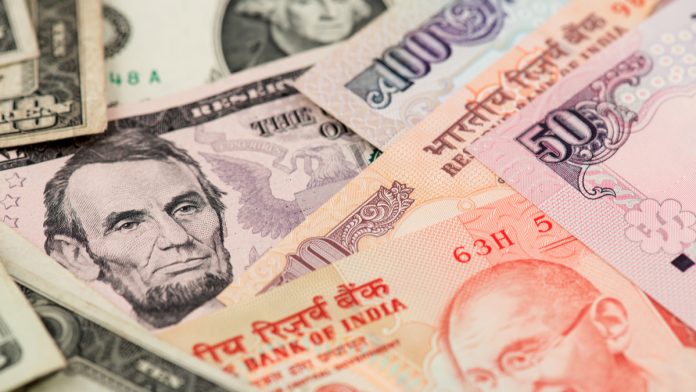- Indian Rupee (INR) rises after losses last week
- PBoC cuts 1 year prime loan rate by 0.1%
- US Dollar (USD) falls after five weeks of gains
- Jackson Hole Symposium in focus
The US Dollar Indian Rupee (USD/INR) exchange rate is falling at the start of the week after rising across the previous week. The pair rose +0.32% in the previous week settling on Friday at 83.16. At 11:30 UTC, USD/INR trades -0.07% at 83.10 and trades in a range of 83.05 to 83.20.
The Rupee is showing resilience amid an improving market mood despite ongoing concerns over China. The market has shrugged off a smaller-than-expected interest rate cut by the People’s Bank of China. The central bank cut the 1-year loan prime rate by 10 basis points to 3.45% but left the 5-year rate unchanged. Analysts had been expecting the 1-year and the 5-year rates to have been cut by 15 basis points.
Separately, purchases of Indian shares fell to a five-month low in the first two weeks of August amid rising concerns over China’s economy and rising US interest rates.
The US Dollar is falling across the board. The US Dollar Index, which measures the greenback versus a basket of major currencies, trades at -0.09% at the time of writing at 103.28, after five straight weeks of gains.
The US dollar is easing lower as the market mood improves slightly. US futures are rising after 3 weeks of declines and the USD is falling modestly after 5 weeks of gains.
The USD tracked US treasury yields higher last week, amid rising bets that the Federal Reserve will need to raise interest rates further or keep rates higher for longer in order to tame inflation. The more hawkish Fed expectations come after a series of stronger-than-forecast data, and after the minutest to the July FOMC were stronger than expected.
There is no high-impacting US economic data due to be released today. Attention is turning towards Federal Reserve Jerome Powell’s speech at the Jackson Hole Symposium on Friday where the head of the US central bank could provide further clues over the future direction of rates.




